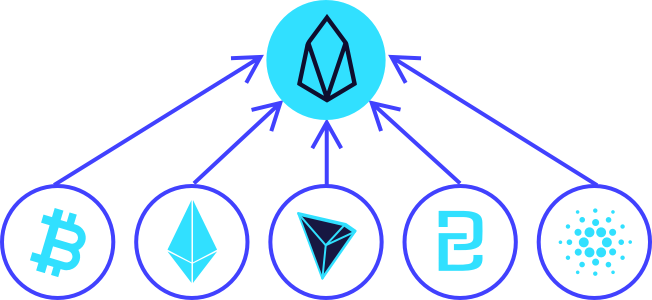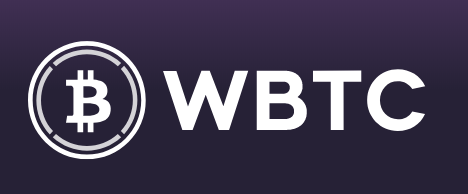Interoperability is a multisyllabic word for a multi-faceted problem. How do you get blockchains to communicate with one another? Until recently, there’s been no easy way to achieve this, leaving assets isolated and smart contract-powered dapps siloed on their respective protocols. Before crypto assets can take over the world, first they need to escape the valley where they originated, a task which calls for building bridges.
Also read: Bitcoin Mining Industry’s Exponential Growth Just Won’t Stop
The Quest to Connect Crypto Networks
The cryptosphere is often described as being tribalistic on account of its factions’ skepticism of opposing altcoiners, whose ideology differs from theirs. Tribalism doesn’t just apply to crypto culture however: it’s also deeply woven into the architecture of the blockchain protocols themselves. Early civilizations were quite literally tribalistic due to the geographical difficulties of making it into the next valley, where strangers dwelled. Until recently, it was the same with crypto networks: litecoin could only exist on Litecoin, dash on Dash, while bitcoin cash and bitcoin core were destined to remain forever opposed, despite their shared history.

Siloed crypto networks are no better than the incompatible rails that define the traditional financial system, resulting in slow international transfers and high fees imposed by the monopolies that control them. If crypto assets are to deliver financial inclusion for the many, not just the few, someone needs to build the bridges and connect the valleys where the various tribes reside. This calls for complex architecture that can facilitate the cross-chain transfer of assets and enable networks to share resources. Despite the magnitude of the task, significant headway has been made in getting blockchains to “talk” to one another.
Building Bridges With Blockchains
Liquid Link typifies the sort of projects that are currently making inroads in interoperability. Created by Liquidapps, it comprises a framework that enables dapps to be launched on Ethereum and EOS simultaneously, without suffering the usual trade-offs in speed and scalability. Developers have traditionally had to pick one crypto network on which to build, and then persevere with it, come what may. Blockchain migration, while not uncommon, is costly and time-intensive exercise. Through bridging smart contract networks, developers can enjoy the benefits that each protocol has to offer, while retaining the freedom to switch.

Liquid Link CEO Beni Hakak is a major critic of “blockchain maximalism” and has written at length about the need for crypto communities to overcome their petty differences, noting:
Supporters and users of crypto networks have a vested financial interest in the success of their chain, further magnifying tendencies to stigmatize and ridicule ‘outsiders’ of a competing chain.
He envisages a brighter future in which “The capacity to move value seamlessly across all blockchains will enable each one to focus on their core competency.” Although that vision has yet to be realized, there are signs, at least, of cross-chain concord. The more vocal factions in the BTC and BCH camps don’t see eye-to-eye on much, but that hasn’t prevented Sideshift’s Andreas Brekken from creating “BTC2,” an SLP token that operates on the BCH network, allowing people to transact in BTC while enjoying the low fees of Bitcoin Cash. For developers seeking to create similar applications for unlocking value on the BCH network, Bitcoin.com’s developer portal contains a wealth of tools and tutorials.
Wrapped Assets Are the Prelude to Greater Interoperability
Just because two cryptocurrencies reside on incompatible blockchains doesn’t mean the value they represent can’t be traded on opposing chains. In addition to Shideshift’s wrapping of BTC on BCH, wrapped bitcoin (WBTC) can be traded on Ethereum, with the BTC held in escrow. Binance has also got in on the act, introducing BTCB as a BEP2 token that’s tradable on Binance Chain. The trouble these solutions face is that they require a third party to custody the coins in order for their synthetic equivalent to be made tradable on the foreign chain.

The decentralized alternative to this is the atomic swap, in which the coins on each chain are locked, and a smart contract handles the exchange. Despite having been around since 2017, atomic swaps have fallen out of favor due to the slowness, complexity, and inability to perform high frequency, high volume swaps. The Lightning Network uses similar technology known as Hash Time Locked Contracts, but until such a time as LN moves out of its interminable test phase, real world usage of atomic swaps, and variants thereof, will remain marginal. Facilitating seamless cross-chain transfer of assets calls for the creation of components that can connect blockchain protocols, allowing them to communicate freely.
The Interoperability Projects Intent on Helping Blockchains ‘Escape the Valley’
Cosmos is described as an “internet of blockchains” that aims to unite disparate chains through its Interblockchain Communication (IBC) messaging protocol which works a bit like TCP/IP on the web. This “allows heterogeneous blockchains to transfer tokens and data to each other, meaning that blockchains with different applications and validator sets are interoperable.” With Cosmos, for example, tokens and other assets can be transferred between public and private blockchains.
Wanchain is an aptly named interoperability project, “wan” meaning “one” in Scots. Its developers aim to create one chain to connect them all, enabling different ledgers to communicate and exchange value, forming a distributed bank. So far, cross-chain transfer of BTC and ETH assets, including ERC20 tokens, has been achieved, enabling Ethereum dapps to access BTC, for instance.

Polkadot’s whitepaper is grandly titled “Vision for a heterogeneous multi-chain framework.” Heterogeneous is a term that crops up a lot in the esoteric world of blockchain interoperability and simply refers to the unification of two things that are intrinsically different, like water and oil, or Bitcoin and Ethereum. Any type of blockchain data or asset can be transferred using Polkadot’s series of relay chains, parachains, and bridges. Once it launches later this year, BTC, ETH, ZEC, and other leading crypto networks will be united.
The lack of adoption and completion of these interoperability solutions to date attests to the magnitude of the challenge being undertaken. However, just as it seems inevitable that all assets will eventually be represented and traded digitally (in the words of Pomp, it “could take 5 years or 50, but it is no longer a question of if, but when”), it seems certain that in the future all major crypto networks will be interoperable. Whether uniting the chains serves to unite their opposing factions, however, remains to be seen.
Which blockchain interoperability project do you think is likeliest to succeed? Let us know in the comments section below.
Images courtesy of Shutterstock and Polkadot.
Are you a developer looking to build on Bitcoin Cash? Head over to our Bitcoin Developer page where you can get Bitcoin Cash developer guides and start using the Bitbox, SLP, and Badger Wallet SDKs.
The post How Bridging Blockchains Unlocks Value and Unites Crypto Tribes appeared first on Bitcoin News.
Powered by WPeMatico
